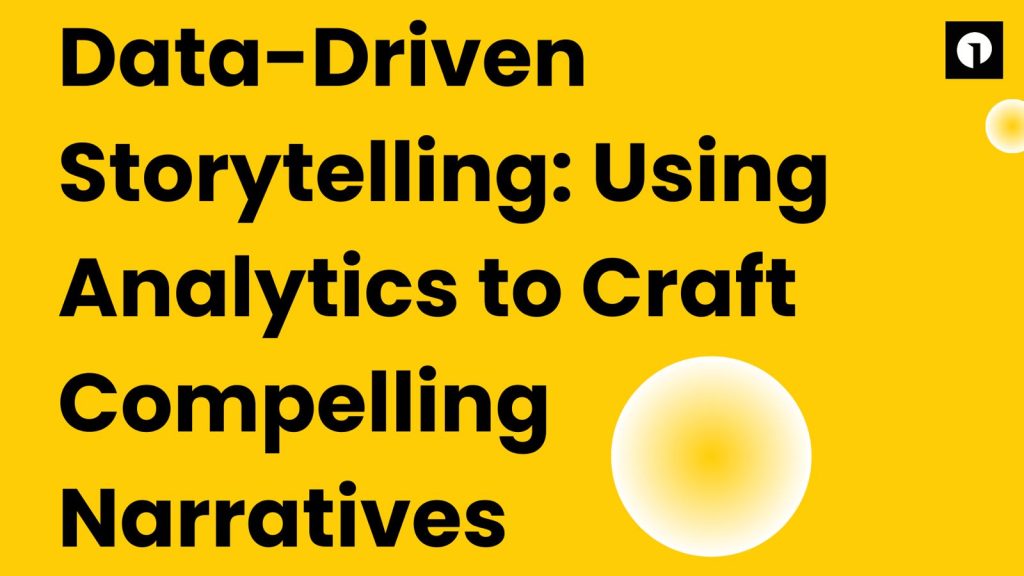TLDR:
Data-driven storytelling melds analytics with the techniques of storytelling in compellingly persuasive ways. Data-driven storytelling helps marketers move beyond the hard sell, pushing stories that resonate with audiences. This post looks into the importance of data-driven storytelling, ways to integrate analytics into your content, and how it benefits the engagement and bottom-line business outcome.
In an age where data is abundant and attention spans are short, the art of storytelling has evolved. Traditional narratives just aren’t enough; the audience is craving stories that have data behind them. Data-driven storytelling combines the power of analytics with the art of storytelling to create content that not only engages but is persuasive and impactful. Such an approach enables marketers to weave narratives that resonate most with their audience, thereby driving engagement and meeting business goals.
The Importance of Data-Driven Storytelling
Data-driven storytelling, in today’s world, is important for several reasons:
- Credibility and Trust: Stories supported by data are perceived as more credible and trustworthy. So when you present data to support your narrative, it lends authenticity and authority to your content.
- Engagement: Data-driven stories are often more engaging because they offer concrete evidence that can captivate and hold the audience’s attention. Statistics, charts, and graphs can make the abstract more tangible and understandable.
- Personalization: By leveraging data, you can tailor your stories to different segments of your audience, making them more relevant and compelling. This personalization can drastically improve user experience and engagement.
Integrating Analytics into Your Storytelling
Here are a few steps you can take to effectively integrate analytics into your storytelling:
- Collect Relevant Data: First, collect data which is relevant to your narrative. This may include market research, customer feedback, sales data, and social media metrics. Ensure the data you collect is accurate, up-to-date, and relevant to your audience.
- Analyzing the Data: With data collected, now move to analyze it to find trends, patterns, and insights. Thereafter, begin looking for data points that can help support your story or highlight key aspects of your narrative.
- Create a Narrative: Using the results of your analysis, it is high time to create an amazing story. Your story should have a beginning, a middle, and an end. The data has to be incorporated into the narrative so that it adds to the story but does not overpower it.
- Visualize the Data: Use charts, graphs, and infographics to display your data. Such visual elements will make the information much more understandable and interesting. Tableau, Infogram, and Google Data Studio can help you create visually appealing presentations about your data.
- Tell the Story: Share your narrative with your audience once it has been completed. Use multiple channels to reach an even wider audience. This might involve blog posts, social media, newsletters, and presentations.
Benefits of Data-Driven Storytelling
There are a great number of benefits to integrating your data into your storytelling process:
- Better Engagement: Data-driven stories have a higher propensity for capturing and keeping the attention of the audience. The combination of an interesting narrative and concrete evidence will make your content experience powerful and memorable.
- Informed Decision-Making: Data-driven content gives invaluable insights that can help inform business decisions. By knowing what the audience likes, you can easily adjust your strategies to get better results.
- Higher Conversion Rates: Data-backed stories can be persuasive, thus causing higher conversion rates. Whether you want to generate leads, increase sales, or build brand awareness, data-driven storytelling will help you do that more effectively.
- Better SEO: Content that is combined with data and visual elements tends to rank higher in search engines. High-quality, informative content that appeals to the readers will bring more traffic and perform better in SEO.
Real-World Examples
Several brands have benefited from using data-driven storytelling to enhance their marketing efforts:
Spotify’s Wrapped Campaign: Spotify comes up with personalized year-in-review reports each year for its users. Data-driven stories highlight a user’s listening habits, favourite songs, and top artists. This campaign involves user engagement and brings in high social media buzz as users share their personalized stories online.
Conclusion
Data-driven storytelling is an extraordinary tool that links the analytical to the narrative and creates compelling content. The use of data allows marketers to craft stories that tell a deeper meaning and resonate with their audience, thus creating engagement and achieving business goals. Data-driven storytelling is a method that captures the attention of users, builds trust, and drives conversions in a world where content is king. Leverage the power of data-driven storytelling to better your content marketing efforts and connect with your audience on a deeper level.








